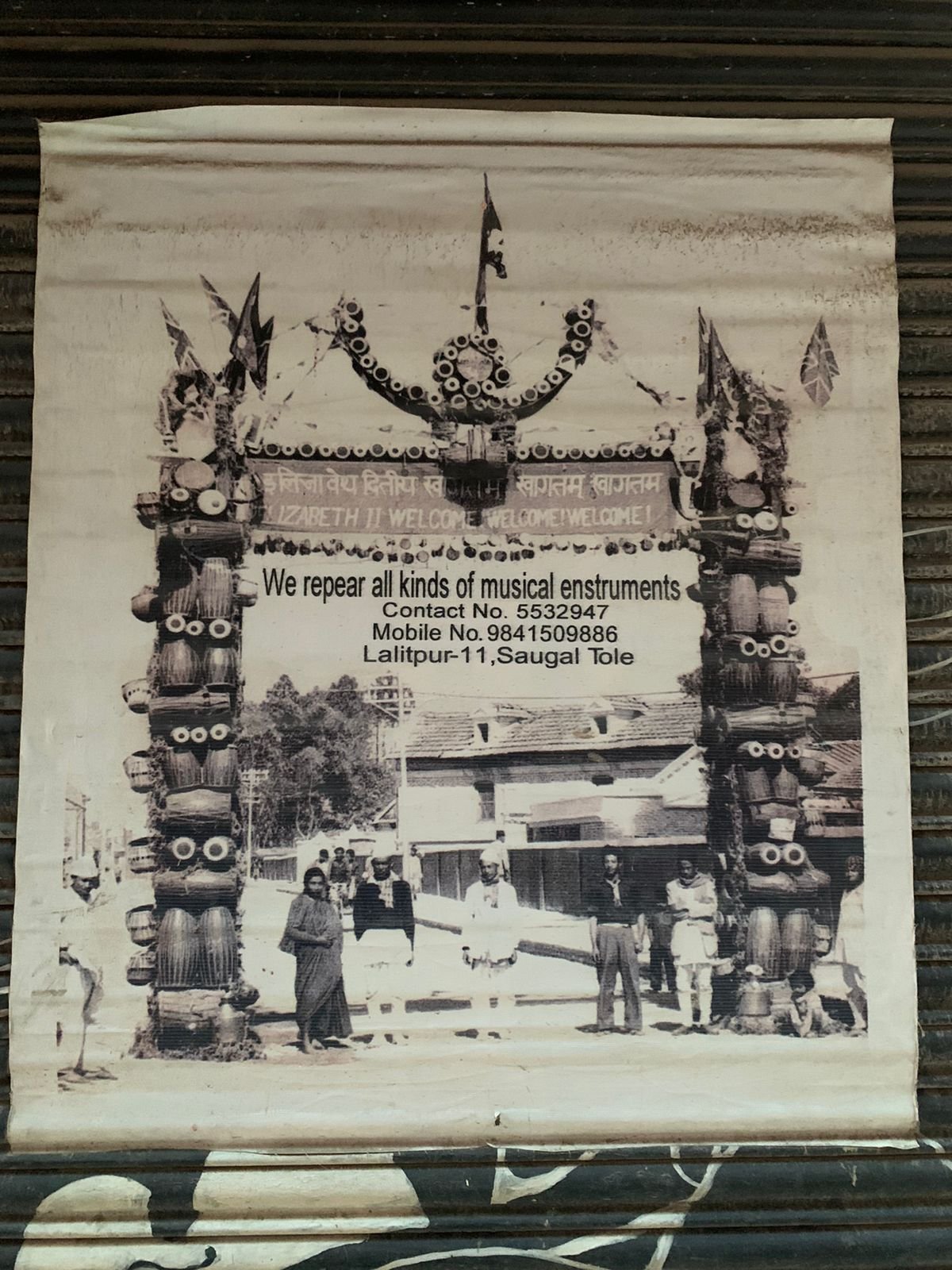Alina Tamrakar is an architect and researcher who has worked extensively on post-earthquake heritage reconstruction in the Kathmandu Valley. She is also a founder of Baakhan Nyane Waa, an initiative that uses storytelling and folktales as a medium to connect others with oral heritage.
Fig. 1: The lamp holder on the wall in Kirtipur (Photo: Alina Tamrakar).
I took the examples of the lamp holder on the wall and the stone lying in the middle of the narrow street in Dhaugal and the different values they hold to different people as a starting point for intrigue. The lamp holder located on the blank wall in Kirtipur looks simple in appearance, but its location, without any other elements around, caught the attention of many of the participants of the summer school, including me. A native dweller then replied to our queries. One of the traditional dances of Kirtipur starts from there and this takes place once in twelve years. So, it held an important place for all of the natives. That was also evident later during the procession when women were seen lighting an oil wick in the holder and most of them respectfully bowing their head to it (ढोग्नु in Nepali). So, other than once in twelve years, when the dance starts from this building and when people light an oil wick during processions similar to this when it comes alive, it holds meaning to the natives. Meanwhile, for an outsider or a visitor without this context, the lamp holder’s presence makes you wonder what it is and why is it there like that.
Fig. 2: A stone lying in the streeet in Patan (Photo: Alina Tamrakar).
In the case of the stone, there are numerous such stones located in the middle or corner of a street, which people worship and venerate as a deity. However, the location of these idols may have changed as a result of street widening or changes in the urban form. The one in the picture from Dhaugal also lies in the middle of the street. As we were leaving from Patan House, a few of us dodged the stone and moved ahead. However, a few other, non-native friends were unaware and had to be informed about it, as they were unaware of its native significance and meaning. Often smeared with vermilion, these stones look mysterious at first glance.
From both of these cases, it is clear that the form and scale of these objects is not directly proportional to the value attached to them; likewise, the value and significance differ from a practitioner, to a researcher, and to a layperson. At the same time, these elements do not demand the great, or at least minimal respect and approach that majestic heritage structures do.















































